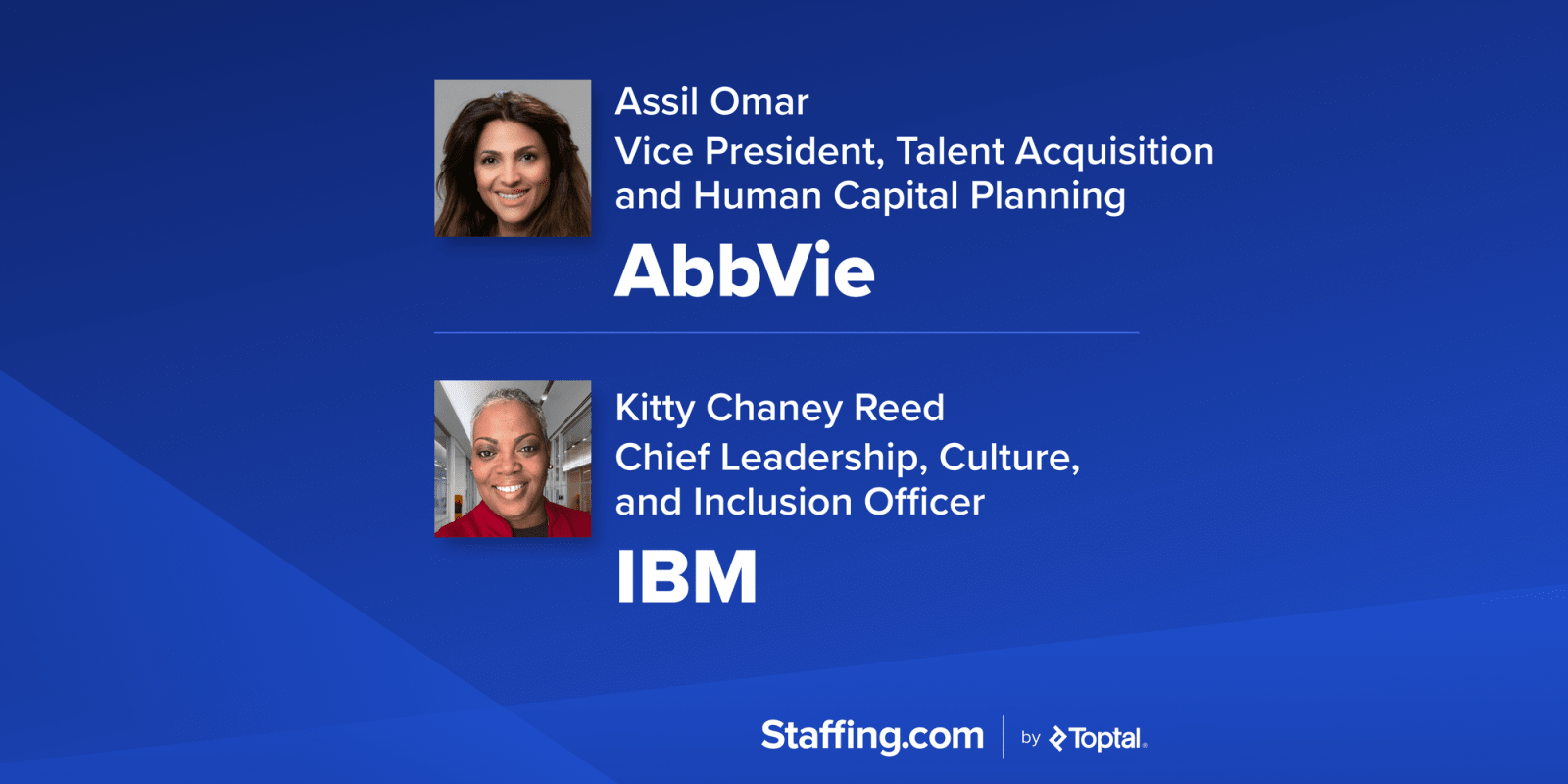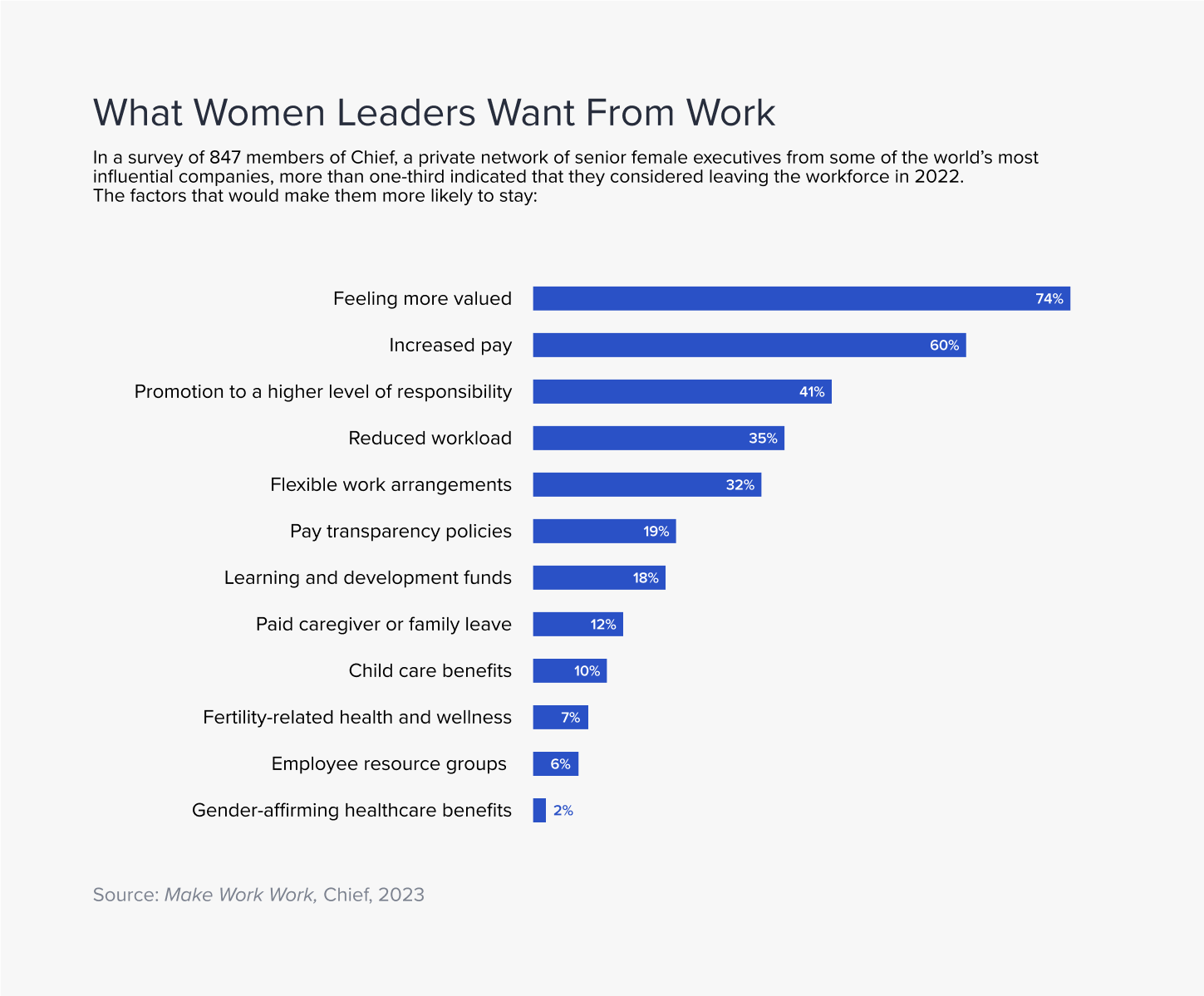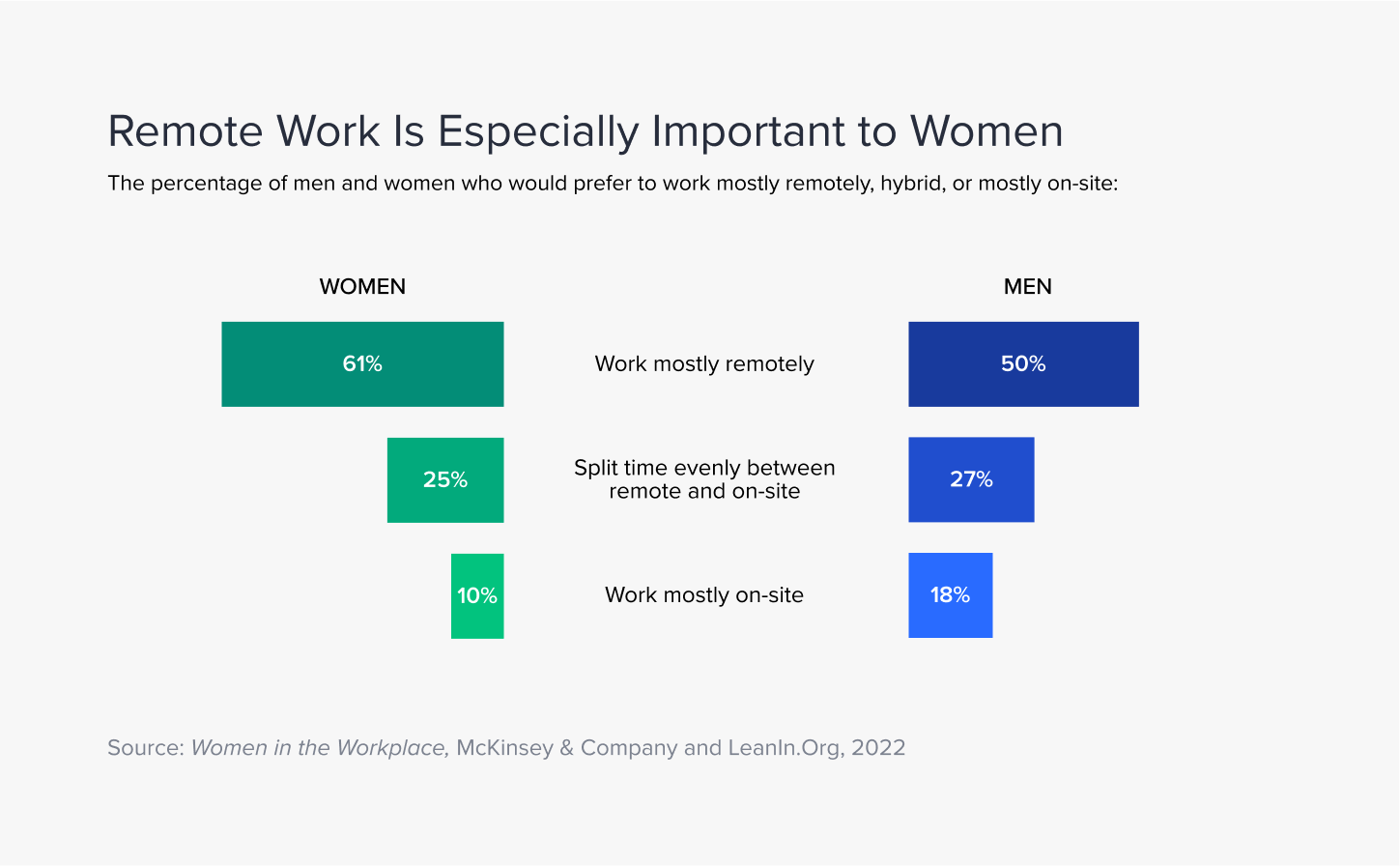How AbbVie, IBM, and Other Top Companies Are Advancing Women in Leadership Positions
authors are vetted experts in their fields and write on topics in which they are extremely knowledgeable. All of our content is peer reviewed and validated by world-class professionals.

Featured Experts
The number of female CEOs at Fortune 500 companies has hit a record high, but women are still vastly underrepresented in the top ranks of corporate America. It’s a challenge for employers looking to boost the number of women in leadership positions, and one without an easy solution.
Women now make up more than half of the college-educated labor market in the United States, yet companies have struggled for years to ensure women are equally represented in the leadership pipeline. For every 100 men promoted from entry level to manager, only 87 women are promoted, according to McKinsey & Company’s and LeanIn.Org’s 2022 Women in the Workplace report.
For women, rising to the executive ranks is a persistent challenge. And, for companies, retaining female executives once they’ve risen is also a challenge. Workers continue to switch jobs at historically high numbers and, according to Women in the Workplace, female leaders are changing jobs at the highest rates in years—significantly more than male leaders.
What keeps women in the workforce is actually quite simple: Pay them, promote them, and value them.
– Lindsay Kaplan, co-founder of the women's networking group Chief
Many companies have attempted to stem this attrition by introducing or expanding benefits like parental leave and providing education and upskilling. But these efforts haven’t effectively shifted mindsets or encouraged behaviors that foster an inclusive corporate culture and deliver business advantage, according to IBM’s global study, Women, Leadership, and Missed Opportunities. Other research has echoed these findings.
“After a recent survey of our members, we learned that two out of five women leaders considered resigning [in 2022],” Lindsay Kaplan, co-founder of Chief, a network of senior women executives, tells Staffing.com. Chief polled 847 of its members, all at the vice president level or above and who collectively manage $220 billion of the US economy.

“Companies think women want policies like remote work and paid leave, but these are table stakes—not added benefits,” says Kaplan. “What keeps women in the workforce is actually quite simple: Pay them, promote them, and value them.”
Staffing.com asked leaders at IBM, AbbVie, and General Mills to share their strategies for fostering gender equity and advancing women in leadership.
Support Women in Technical Roles
Data scientists, information security analysts, and web developers are among the fastest-growing and highest-paid occupations in the US. Retaining women in these fields is crucial to achieving gender equity in leadership positions. Yet a McKinsey analysis found that women in technical roles are less likely than men to win promotions early in their careers, and many exit the field. Women’s relative representation in these jobs decreased between 2018 and 2022.
To reverse that trend, the analysis recommends three key strategies:
- Connect early-tenure women with capable managers, mentors, and sponsors.
- Implement a structured approach to early promotions, with well-defined skills criteria for each role and level (to prevent bias from impacting promotion rates).
- Provide equitable access to training, projects, and other resources to accelerate skill-building for women in technical roles.
The IBM Pathways Program was designed with several similar strategies in mind. The program connects women in technical jobs with coaches and mentors, and helps them create a customized career roadmap, Kitty Chaney Reed, Chief Leadership, Culture, and Inclusion Officer at IBM, tells Staffing.com. It pairs each participant with a technical coach and a business sponsor. During a two-day workshop, the coach and sponsor learn about the participant’s skills, experiences, and aspirations, then the group creates a career advancement plan, which includes a timeline and needs analysis.
“Post-workshop, the participant, manager, coach, and sponsor meet regularly and use the Career Advancement Plan to close experience gaps, identify opportunities, and expand the participant’s network,” she says. “The coach and sponsor are committed to supporting and engaging with their participants until they achieve their desired senior technical leadership role.”
Since 2011, more than 800 women in technical roles have participated in the program, and more than 190 have been appointed to senior leadership roles.
Focus on Formal Sponsorship
It’s not just women in technical roles who benefit from career advocates. Formal programs that pair employees with sponsors have proven to help women in a variety of industries advance in their careers.
Sponsors do more than mentor. In addition to helping their protégés develop their career visions, they use their personal clout to advocate for them.
Fortune 100 pharmaceutical giant AbbVie has long had a successful mentoring program that matches high-performing, diverse talent with AbbVie senior executive leaders. In 2021, the company also launched its Executive Sponsorship Program.
“Our sponsorship program is based on a one-on-one partnership and provides participants with expert coaching and guidance, and encourages the formation of long-term professional relationships for diverse candidates to help them feel valued and supported,” Assil Omar, AbbVie’s Vice President, Talent Acquisition and Human Capital Planning, tells Staffing.com.
“It’s important to underscore that this is a two-year program—which is very unique. I’ve spent a great deal of my career in leadership development, and we typically see 6- to 12-month-long programs. Two years represents a serious commitment and investment.”
Get Remote Right
Women are far less likely than men to want to work mostly on-site, according to Women in the Workplace, at least in part because when they work remotely, they experience more psychological safety and fewer microaggressions. Companies that offer remote and hybrid arrangements have a distinct advantage in hiring and retaining women in leadership.

Flexible work is clearly key for advancing women in leadership—but so are relationships. Stephanie Bienert, HR Director, Employee Experience at General Mills, credits the company’s strong culture of belonging, as well as its new flexible work model, for helping it retain and develop female leaders at all levels. Half of the company’s managers are women.
“In September of 2021, General Mills launched our ‘Work with Heart’ framework to allow for generous personal and team flexibility, allowing our employees to work from home, the office, and elsewhere based on their own needs and the needs of the business,” she tells Staffing.com. “To do this effectively, we think about connecting with intentionality—the moments both big and small, in person, virtual, and hybrid.”
However, Bienert emphasizes that Work with Heart “is not an arbitrary schedule or a one-size-fits-all solution.” Needs vary from team to team and employee to employee, so it’s crucial for managers to implement the model that works best for each group.
Managers must also make sure all employees are treated equally, no matter where they work, says AbbVie’s Omar.
“While we have extensive research from the past few decades on the disadvantages women face in the workplace, the research on the effects of working remotely on women is still nascent. That said, we know that fully remote or hybrid work arrangements can create risks, regardless of gender,” she says. “It’s critical we recognize and address risks proactively, whether it’s exposure to leadership, access to mentoring, assumptions about commitment and aspirations, share of voice in meetings, or psychological safety.”
When AbbVie implemented its hybrid model, “it was a decision based on much research, benchmarking, and input,” Omar says, adding that it’s important to check in periodically. “We proactively reach out to employees, people leaders, and executives on how this model is working for them and, so far, we are seeing positive feedback across different levels and groups.”
Turn Commitment Into Action
Experts agree that it’s important to set representation goals, and pick programs and benefits that will help achieve them, but “making gender equity a priority through accountability is also a necessity,” says Chaney Reed. “At IBM, senior executives’ compensation and bonuses are tied to achieving DE&I goals.”
Among the 2022 Top Companies for Executive Women, according to DE&I professional services firm Seramount, 72% compensate managers for DE&I results, including women’s representation.
That accountability isn’t just important for advancing women in leadership. It also gives companies metrics to prove their DE&I efforts are working—metrics that will come in handy as some businesses face pressure to scale back their DE&I efforts.
“Companies that do not have diverse teams may struggle to meet the needs of their diverse customer base,” Chaney Reed says.
While optimistic about the future, AbbVie’s Omar acknowledges that there is still work to be done to reach gender equality in leadership positions. “We need to continue to have conversations on the best ways to grow and support our women leaders [at] every stage,” she says. “I strongly believe that gender balance is not only a business imperative but a socioeconomic imperative. We can’t have a successful, thriving economy or nations without unlocking the incredible potential of women going forward.”




